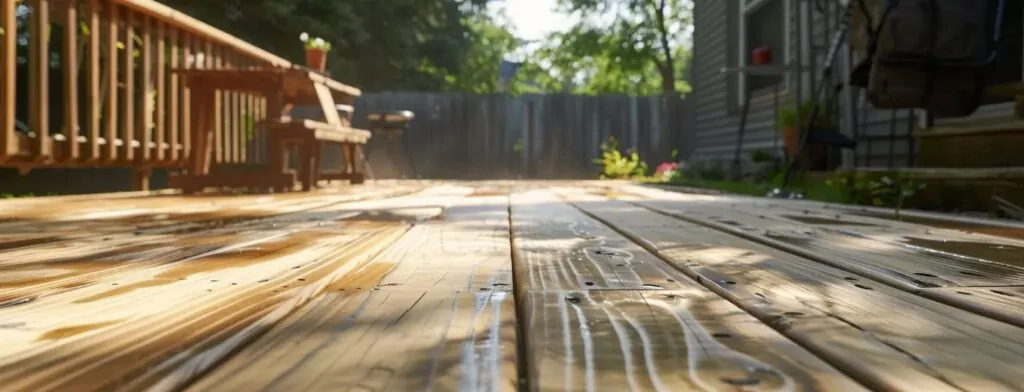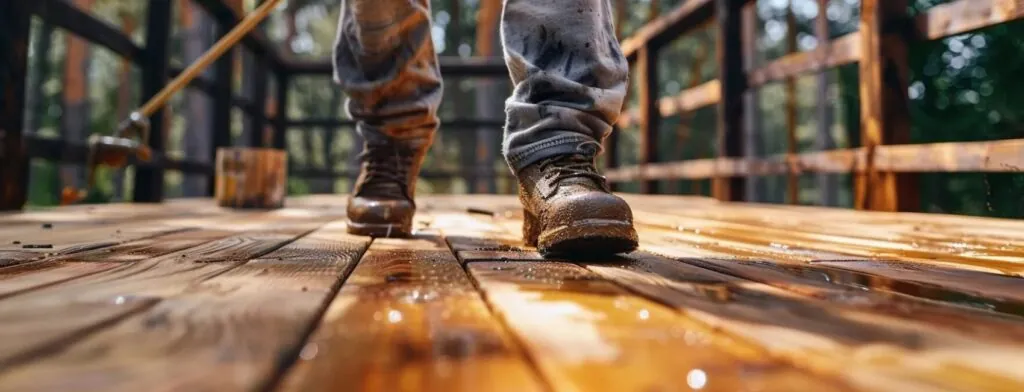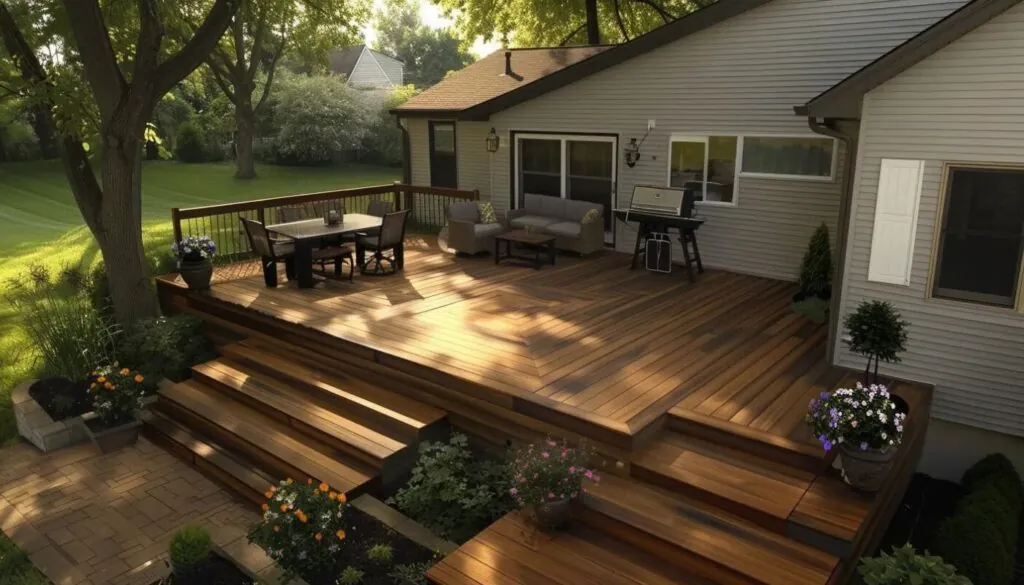If you have invested in a pressure-treated wood deck, you know how important it is to keep it looking its best and protected from the elements. Staining your deck not only enhances its natural beauty but also extends its lifespan. However, knowing when and how to stain pressure-treated wood can make all the difference in achieving a professional-looking finish.
In our latest guide, we will walk you through the essential steps to effectively stain pressure-treated wood, ensuring that your deck remains a stunning focal point in your outdoor space. From understanding the ideal timing for staining to choosing the right products and techniques, this article is designed to help you get the job done right. We will cover practical tips to make the process smooth and straightforward, even if you are new to deck maintenance.
By following our expert advice, you will be able to restore your deck into a beautiful and long-lasting feature of your home. Get ready to elevate your deck’s appearance and protect your investment with confidence!
Why Staining Pressure-Treated Wood is Essential
Staining pressure-treated wood is crucial for maintaining its appearance and durability. While pressure treatment helps protect wood from rot and insects, it does not shield it from the sun’s UV rays and weather damage. Applying a stain not only enhances the wood’s natural beauty but also adds a protective layer that prevents water penetration and reduces the risk of cracking and warping.
Additionally, staining can help preserve the wood’s color and prevent fading over time. Without this protective finish, your deck might quickly lose its appeal and require costly repairs. Regular staining ensures your deck remains functional and visually appealing, extending its lifespan and protecting your investment.
Average Drying Time for Different Types Of Deck Stains
Choosing the right deck stain is essential, but knowing how long each type takes to dry is equally important for a successful application. Drying times can vary based on the stain’s formulation and environmental conditions, so it is helpful to understand what to expect. Here is a breakdown of the drying times for different types of deck stains:

Oil-Based
Oil-based stains are known for their durability and deep penetration into pressure-treated wood, which offers excellent protection and a rich, natural finish. Generally, oil-based stains require a longer drying time compared to other stain types. You can expect them to be touch-dry within 6 to 8 hours, meaning the surface will feel dry to the touch but may not be fully cured. Full curing, which ensures the stain is completely set and bonded to the wood, can take anywhere from 24 to 48 hours.
During this period, it is crucial to avoid heavy foot traffic and keep the deck protected from rain and other moisture. This extended curing time allows the stain to fully penetrate the wood fibers and provide a more robust barrier against the elements.
Water-Based
Water-based stains usually dry faster than oil-based options. They typically become touch-dry within 1 to 2 hours, with full curing taking around 4 to 6 hours. In addition to their quick drying properties, water-based stains are low in odor and have fewer volatile organic compounds (VOCs), which makes them more environmentally friendly and pleasant to work with.
Despite their advantages, it is important to ensure that the wood is completely dry before applying a second coat or exposing it to moisture. If the wood retains any residual moisture, it can affect the stain’s adhesion and overall finish.
Solid-Color Stains
Solid-color stains are ideal for those looking to achieve a rich, opaque finish on their deck. These stains offer excellent coverage, effectively masking imperfections and providing a uniform appearance. Typically, solid-color stains dry to the touch within 2 to 4 hours, allowing you to handle the surface lightly without disturbing the finish. However, achieving full curing, where the stain has been completely set and bonded to the wood, can take between 24 to 48 hours, like oil-based stains.
The extended curing time is necessary to ensure the stain fully penetrates and adheres to the wood, providing long-lasting protection and durability. During this period, it is crucial to ensure proper ventilation and to keep the deck free from rain or moisture.
You might like:7 Clear Signs It’s Time to Replace Your Deck
Methods for Staining or Sealing Your Deck

When it comes to staining or sealing your pressure-treated wood deck, you have a couple of main options: tackling the project yourself or hiring a professional. Each method has its own set of advantages and considerations, so choosing the right approach depends on your comfort level, budget, and desired outcome. Here is a closer look at each method to help you make an informed decision:
DIY Staining of Pressure-Treated Wood
Staining your pressure-treated wood deck yourself can be both rewarding and economical, especially if you are up for a bit of DIY work. The process begins with thorough preparation, which is crucial to restain your deck like a pro. Start by cleaning the deck to remove any dirt, mildew, or old finishes. This can be done using a deck cleaner or a mixture of water and mild detergent, followed by a good scrubbing. Rinse the deck thoroughly and allow it to dry completely before proceeding.
Once the deck is clean and dry, it is time to apply the stain. Choose a high-quality stain suited for pressure-treated wood, and select the right application method—brush, roller, or sprayer. Using a brush allows for detailed application, especially in corners and crevices, while a roller or sprayer can cover larger areas more quickly. Work in manageable sections to ensure even coverage and avoid streaks. Apply the stain evenly, following the manufacturer’s instructions regarding the number of coats and drying times.
Hiring a Professional
Choosing to hire a professional for staining or sealing your deck can alleviate much of the stress and uncertainty associated with the project. Professionals bring a wealth of experience and specialized equipment to the table, ensuring that the job is completed efficiently and to a high standard. They are skilled in all aspects of deck preparation, including cleaning, sanding, and repairing any damage before applying the stain or sealant.
A professional will ensure an even and consistent application of the stain or sealant, adhering to all recommended drying and curing times to achieve the best possible finish. They have the expertise to handle complex staining designs and large areas, which can be particularly challenging for DIY enthusiasts. Additionally, professionals are well-versed in choosing the right products for your specific type of wood and environmental conditions, which can further enhance the durability and appearance of the finish.
Although hiring a professional involves a higher upfront cost, it provides peace of mind and a guaranteed result. It is a worthwhile investment for those seeking a flawless finish and wishing to avoid the potential pitfalls of a DIY approach. This option is especially beneficial if you are unsure about handling the project yourself or if you want to ensure that every detail is executed to perfection.
Related Post:Why are my deck boards rotting?
Final Thoughts on Staining Your Pressure-Treated Wood DeckConclusion
Staining your pressure-treated wood deck is an essential step in preserving its beauty and extending its life. By understanding the optimal timing, choosing the right type of stain, and deciding between DIY or professional applications, you can ensure your deck remains a stunning and durable feature of your outdoor space. Whether you opt for an oil-based, water-based, or solid-color stain, proper application and maintenance will keep your deck looking its best for years to come. With the right approach, you will enjoy a beautifully stained deck that enhances your home and withstands the elements effectively.






